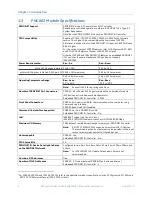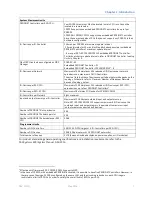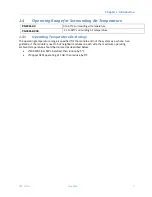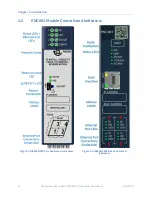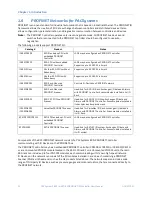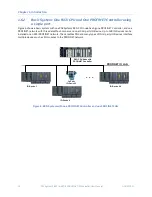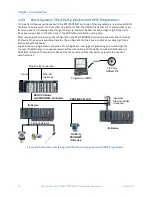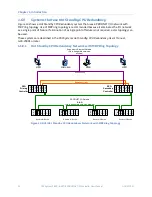
Chapter 1. Introduction
GFK-2571N
May 2018
19
1.6.5
Systems with One RX3i CPU and Two PROFINET Controllers
Both examples in this section show systems with one RX3i CPU that has two PROFINET Controller modules.
The PROFINET network can serve up to 63 IO-Devices (ring topology) or 128 IO-Devices (in star topology).
Note that multiple PNC001 modules in the same rack are not synchronized; that is, no two PNC001 modules
are guaranteed to power up at the same time. PNC001 configuration differences (SFPs, etc.) can also cause
variations in PNC001 power-up times.
If two (or more) PNC001 modules are in a main rack and devices owned by one PNC001 are routed through the
switch on a different PNC001 in the same rack, devices may show a
Loss of Device
fault followed by an
Addition
of Device
fault during RX3i power-up because the first PNC001 can power up before the second PNC001 has
enabled its Ethernet switch, causing the
Loss of Device
. Then when the second PNC001 powers up, the device
will show an
Addition of Device
fault, which is to be expected under these circumstances. Devices will function
normally once added.
As shown in Figure 9, both PROFINET Controllers are connected to the same network.
IO LAN 1
RX3i CPU Node with
2 PROFINET Controllers
IO-Device 1
IO-Device 2
IO-Device 3
IO-Device 4
IO LAN 1
IO LAN 1
NOTE:
Daisy-chain shown for clarity.
A star or ring topology
is preferred.
Figure 9: RX3i System with two PNC001 Modules and one Daisy-Chain PROFINET LAN


